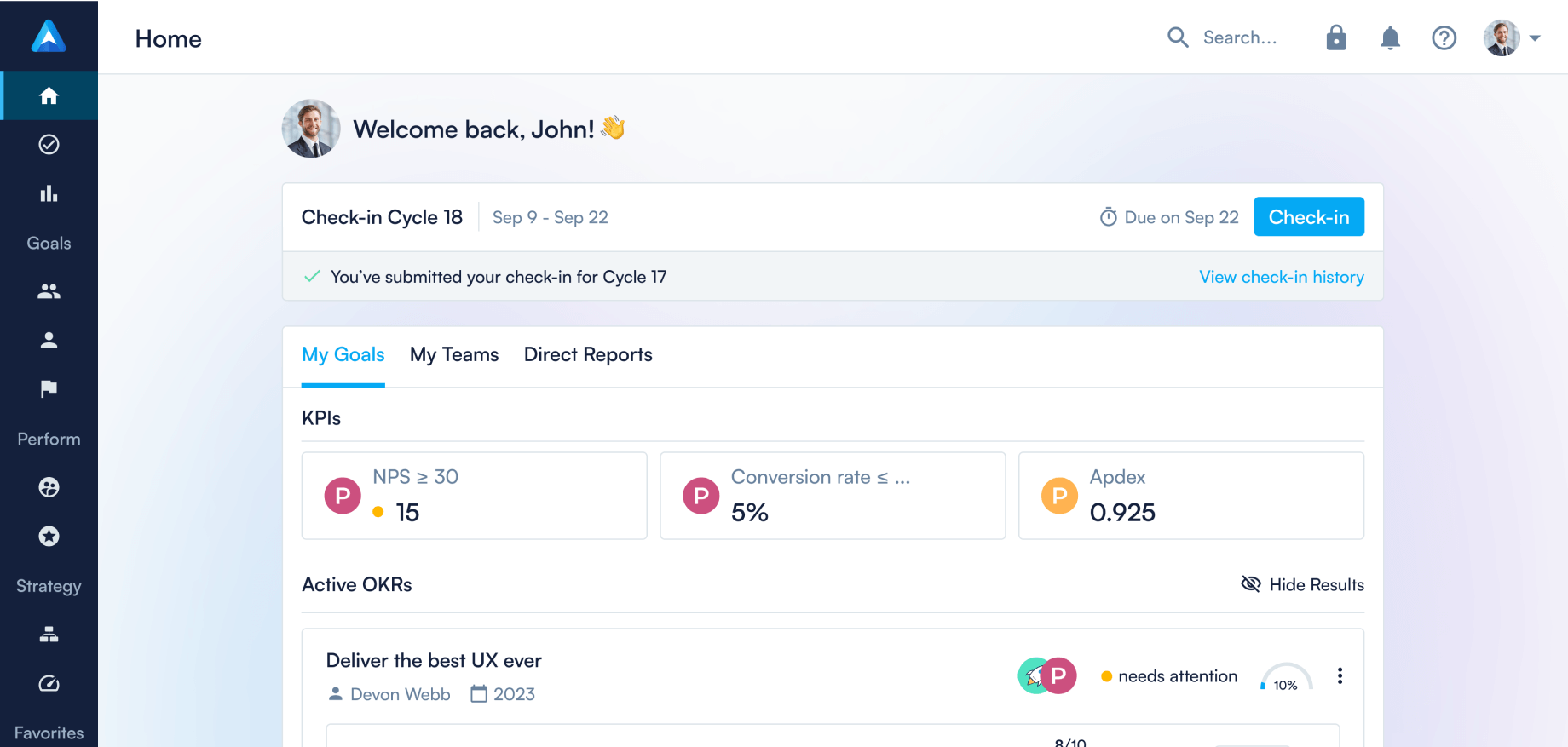
Funnel tracking: Why your approach needs a rethink
Rather watch a video? Scroll down!
Marketing “funnels” have been a hot topic for many years. Some suggest that the traditional funnel is dead and that a flywheel is a better way of thinking about how organizations attract, convert, and retain their customers. But even then, it’s clear that a funnel contains a bunch of KPIs that are crucial to an organization’s growth – and that those KPIs need to be tracked.
There’s a wealth of tools available to serve these funnel-tracking needs. But organizations using these tools tend to always face the same problem: The place where these funnels are tracked tells leaders nothing about what’s being done to address the metrics, and how that work is progressing. It’s disconnected.
Let’s dive into what’s wrong with how we’re tracking our funnels today. We’ll then look at a solution that’ll give orgs more context into what’s being done to push these metrics, and will motivate everyone to achieve them.
Four challenges all funnels face
So you’re probably tracking your funnel in tools like Google Analytics, Hubspot, Salesforce, BI tools, or even a trusty spreadsheet. Here are four issues we’ve encountered, that hinder your ability to have a well-oiled funnel that truly drives sustainable growth:
1. Organizations don’t track metrics in the same place
In the vast majority of organizations, metrics are scattered across multiple tools — a few tend to be tracked in a CRM (eg Hubspot), revenue might be in an accounting software, and maybe some of these metrics are brought together on a spreadsheet. In our conversations with organizations, it’s become clear that very few track their funnel alongside their revenue forecast. This results in a lack of shared understanding and clear direction.
2. We don’t set targets
There are really two major issues in relation to target-setting:
- Where targets are not set for the metrics in our funnels, teams don’t know where to prioritize their efforts. We’re simply watching metrics. The person who’s end-responsible for that metric might have an idea of what “good” looks like, but that’s not visually communicated across the organization.
- Of course, some organizations do set targets for the metrics in their funnel, eg “17k website visitors this month.” When that happens, these metrics become KPIs. But these targets typically aren’t tracked over time, making it hard for targets to reflect the progression and changing environments we all face. Anywhere up to 91% of forecasts change, so flexibility is paramount.
3. Teams don’t communicate the “how” behind targets
When organizations do set targets for these KPIs, leaders and investors rarely have easy access to how the organization hopes to deliver these targets. These are some of the most important metrics for the organization. Growth depends on it. Yet few execs have regular insight into how these targets are going to be realized, and what the status of that work is.
4. The tools we use are exclusive, not inclusive
There’s a lack of transparency in how and where organizations track their funnels. Take BI tools, for example. Only a handful of people tend to have logins – they’re pricey. So it becomes extremely difficult for leaders to rally the whole organization around these KPIs, particularly as you scale.
The solution
Any effective solution to track a funnel and see how it feeds into a revenue forecast needs to be able to answer the four main challenges outlined above. Spreadsheets could fulfill three of the four, but they lack the context mentioned in no. 3: Leaders or investors don’t know what’s actually being worked on to achieve the targets. That work usually lives elsewhere.
At Perdoo, we speak to our customers a lot, and these four problems come up again and again among leaders, so we decided it was time to solve it.
With KPI Boards in Perdoo, you can set up a cross-functional view of all the KPIs that make up your funnel and contribute to your revenue growth. You can give your KPI Boards titles, such as Growth Board. Here’s how it addresses each of those four challenges:
Bring all your KPIs together
With the Growth Board, you no longer need to have five tabs open in your browser to know the state of your funnel. All those metrics come together in one place.

If you’re already using Perdoo, these are likely KPIs that different teams already own, and keep up-to-date. And you can integrate with 70+ data sources for always up-to-date goals. Between our Google Sheets integration, an open API, and native integrations with apps like Jira, Perdoo offers leaders data you can rely on.
Set targets over time
In Perdoo, you can set and adjust targets from month to month. You can even adjust targets for any KPI directly on the Growth Board, as shown below. Track your targets vs actuals over time. Develop a shared understanding and context, so you can work together to achieve sustainable growth.

Reveal the work that drives these metrics
Remember how leaders rarely have a real-time view of what’s being worked on to achieve the growth they desire? The Growth Board solves that too.
Setting a new target for your “lead to customer conversion rate” next quarter? You can create an OKR directly from this KPI in the Growth Board, and then track all the Initiatives that’ll aim to bring this KPI to the next level. Click the bar below each KPI to understand what’s being done each quarter to impact each KPI:

Pricing that works for transparency
At Perdoo, we believe that anyone leading or contributing to a goal that’s important for the organization should have the tools to set, track, and report on that goal. So we keep our pricing affordable. This isn’t a BI tool. And while the Growth Board is in Beta, it’s available on all plans, both free and paid.
Track your funnel and forecast alongside all the work that’ll deliver it. The Growth Board ensures that your entire organization works toward your strategy and growth goals. Create a free Perdoo account and set up your Growth Board today.
Watch video
FAQ
Continue reading...


Why you shouldn’t outsource OKR to HR


How to embed goals in performance reviews






